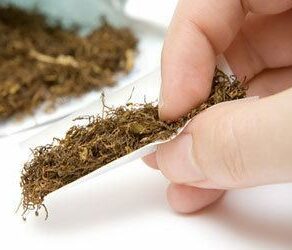
Ruth asked: How do I get black stains out of my pressure cooker? I cooked pork chitterlings in my cooker. It left stains and soap pads don’t move it.
When various foods are cooked in a pressure cooker, they can leave a residue that becomes black and can be difficult to remove. Here are several techniques to loosen the residue with simple items found right in your home.
Onion Method
You Will Need:
- Onions
- Water
- Stove
- Scrubbing pads
- Dish soap
Steps to Remove the Stains:
- Fill the pot with water so that it covers the stained areas. If the stains go up the entire sides of the pot, only fill it ½- ¾ full.
- Remove and add the outer layers (top 2-3 skins) of an onion. For larger stains, add the skins of several onions.
- Place the pan on the stove and cover with a lid. Do not seal the pressurized lid.
- Place on high heat until the water begins to boil.
- Allow the onions to boil in the pan for 20-30 minutes.
- Remove the pan from the burner and allow it to cool until the water is warm.
- Add soap and scrub with a scrubbing pad until the stains are removed.
- Repeat if necessary.
Cream of Tartar Method (for aluminum cookers)
You Will Need:
- Cream of tartar
- Water
- Stove
- Scrubbing pads
Steps to Remove the Stains:
- Fill the pot with water so that it covers the stained areas. If the stains go up the entire sides of the pot, only fill it ½- ¾ full.
- Add several teaspoons of cream of tartar to the water. Cream of tartar is an old remedy for shining up aluminum pans.
- Heat the pot on the stove until the water begins to simmer.
- After 10-15 minutes, the stains should begin to disappear.
- Remove from the heat source and allow the cooker to cool.
- Clean with dish soap as normal. If there are remaining stains, they can be cleaned away with a scrubbing pad.
Ammonia Method
You Will Need:
- Household ammonia
- Scrubbing pads
- Dish soap (Bleach free only)
- Warm water
Steps to Remove the Stains:
- Fill the pot with ammonia so that it covers the stained areas. If the stains go up the entire sides of the pot, only fill it ½- ¾ full.
- Cover the pot with a lid, but do not use the rubber seal as the ammonia may damage it.
- Allow the cooker to soak for several hours to overnight.
- Use caution when removing the lid as the fumes may be quite strong.
- After finished soaking, remove the ammonia and dispose of it properly.
- Clean the pan with dish soap and warm water, using a scrub pad to clean away tough areas.
- Repeat once if necessary.
Additional Tips and Advice
- Remove the rubber seal when cleaning with chemical products to avoid damaging it.
- Ammonia fumes can be irritating to eyes. Wear protective eyewear if needed to lessen exposure.
- Never use soaps containing bleach to clean out a pan that has been filled with ammonia. The mixture of bleach and ammonia creates toxic fumes.
- Some have found toilet bowl cleaners effective for removing stains. Use caution when introducing such harsh chemicals and cleaners to cooking items. If used, ensure all traces of cleaning product are removed before use.
- If the pan is pitted or damaged, it may be time for a new pan.









Thank you for the cream of tartar advice. I found it is quick, easy, cheap and it works.
My aluminium pressure cooker has turned black after I cooked dried peas in it. Can you tell me the best way to clean it?
The outside of my pressure cooker got stains…how can I remove those stains? Can u tell me any suggestions?
The onion skin method worked for me. Thanks a lot!
My wife says that if your hand’s working, you can do it easily without this long method.
The cream of tarter totally worked. My pressure cooker looks brand new with NO scrubbing! I’m so excited; thank you so much!
I fixed pot roast in my stainless steel pressure cooker. When cleaning, I found a sticky residue that I cannot get off. Any ideas?
Susan,
If the sticky residue doesn’t come off with dish liquid, two other things you can try are either baking soda on a damp sponge or cloth, or a little white vinegar on a cloth. Be gentle with the baking soda as its a mild abrasive; move the sponge in the direction of the grain of the stainless steel. If neither of those work, try using a few drops of oil or a little peanut butter. The oil (or the oil in the peanut butter) should help to loosen the stickiness so it can be removed. Good luck!